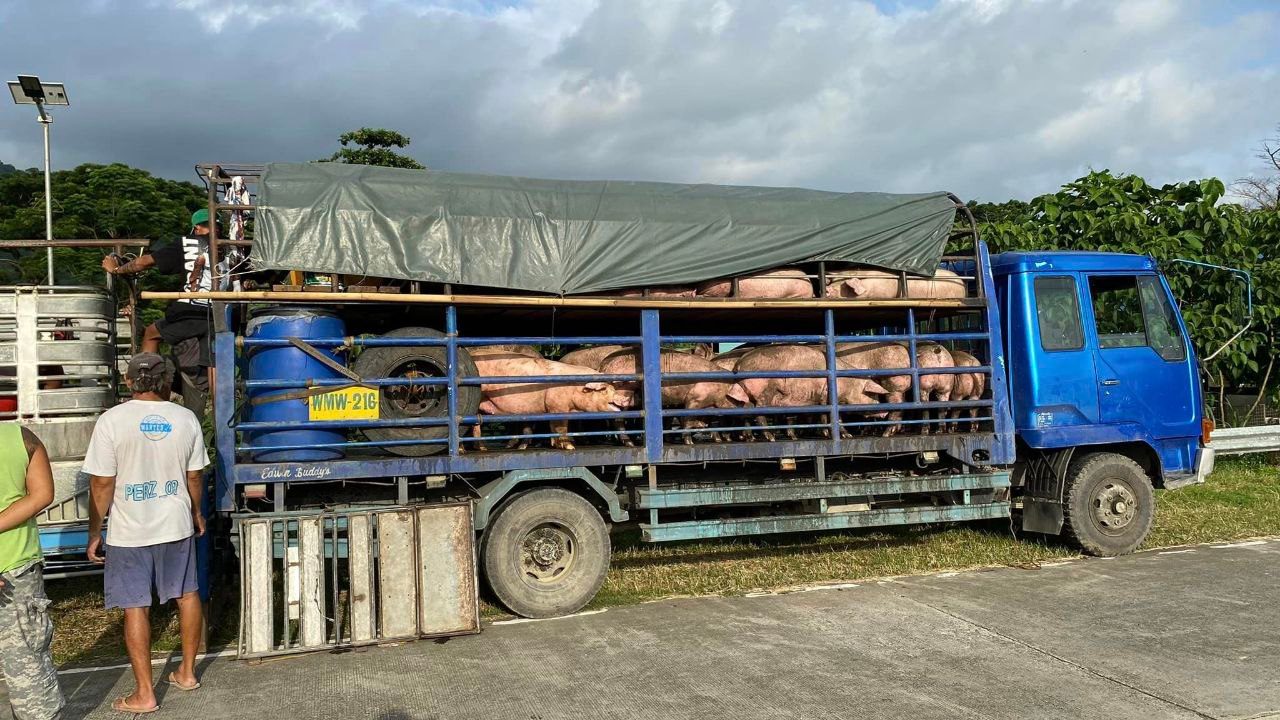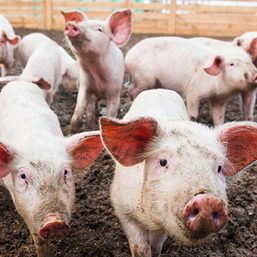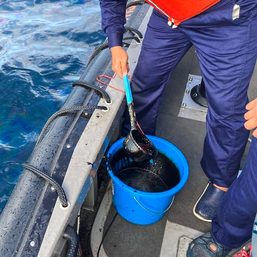SUMMARY
This is AI generated summarization, which may have errors. For context, always refer to the full article.

MANILA, Philippines – Hogs in African Swine Fever-affected towns in Occidental Mindoro have tested negative for the virus, bringing hope to the province. Just over a week ago, the provincial government raised the alarm over the ASF infections.
Officials reported that as of Tuesday, January 30, they have not recorded any hog deaths due to ASF in the affected towns.
Laarni Tiuzen, the supervising administrative officer at the Occidental Mindoro Office of the Provincial Veterinarian (PVet), told the provincial board on Tuesday that pigs from the towns of San Jose, Rizal, and Santa Cruz have tested negative for the virus.
On January 22, Occidental Mindoro Governor Eduardo Gadiano confirmed that the province did not steer clear of the disease, following the laboratory results of the Bureau of Animal Industry (BAI).
“Pinakiusapan ang lahat ng mga may-ari ng iba pang apektadong baboy sa loob ng 500 metrong pabilog mula sa unang positibong kaso ng ASF sa mga nasabing lugar na kusang-loob na ibigay sa mga awtorisadong opisyal ang kanilang alagang baboy. Ang mga nasabing apektadong alagang baboy ay isinakripisyo (culling/depop) at ibinaon alisunod sa Department of Agriculture Administrative Order No 22 S. 2020,” read Gadiano’s statement.
(We’ve requested all hog owners within a 500-meter radius from the first positive case of ASF in the affected areas to surrender their pigs to authorized officials. The affected pigs were culled and buried in accordance with the Department of Agriculture Administrative Order No. 22 S. 2020.)
Tiuzen noted that Sitios Amaling I in San Jose, Danlog in Rizal, and Buboy in Santa Cruz were already working its documents to be under the “green zone” status after classifying under the “pink zone.”
The Department of Agriculture (DA) classifies areas adjacent to places where ASF cases have been documented as buffer zones or “pink zones,” while the “green zones” are those free of virus.
A total of 117 hogs had been infected and died due to the virus in the province, and about 137 others from 54 households were culled, officials said.
The affected areas, however, have yet to obtain certificates showing that they are ASF-free after a monitoring period. This means they cannot transport hog products in and out of their areas yet.
Only the towns of Abra de Ilog, Mamburao, Sablayan, and Magsaysay on the mainland are, so far, free to do so.
The PVet also urged Occidental Mindoro residents to follow the established farmgate prices for live hogs being sold in the province based on the governor’s executive order.
The farmgate price for a pig for slaughter is set at P135 per kilogram, with premium hogs priced at P150 per kilogram.
Scare
Occidental Mindoro Provincial Board Health and Nutrition committee chairman Ryan Gadiano Sioson urged the PVet to intensify the dissemination of information to counter false reports about the ASF threat in the province.
On Tuesday, Sioson told the provincial board that a number of pork vendors in Santa Cruz alone have suffered losses due to the threats of the virus.
“It will cause a bad effect in the province and on the lives of our kababayan… kasi ‘yung mga ‘yun, hindi na mag-aalaga ng baboy kahit kailan. ‘Yung scare na dinulot ng pangyayaring ito ay talagang tatatak na sa isip nila at maghahanap ‘yan ng ibang pagkakakitaan,” Sioson said.
(It causes negative effects in the province and on the lives of our people because they will not raise pigs for a living anymore. The scare brought by this situation will surely stick in their minds, and they will seek other means of livelihood.)
Indirect impact
D’aboville Foundation, a non-profit organization that works for the environment and eco-cultural tourism in Mindoro, raised concerns about the entry of ASF in the province, pointing out that hog-raising is an important livelihood source on the island.
It also pointed out that wild hogs, like the Mindoro warty pig, are major sources of bushmeat for the indigenous Mangyan communities.
“If this disease affects the population of the Mindoro warty pig greatly, [as] it happens in other areas of the world, obviously, in the end, people will need to look for sources of bushmeat in another species. In Mindoro, basically, [other sources of meat] might be the Philippine deer and also Tamaraw,” said D’aboville Foundation Conservation Research Officer Fernando Garcia Gil.
Tamaraw Conservation Programme Coordinator Neil Anthony del Mundo told Rappler that once the ASF infects a huge number of hogs in the province, it may affect the balance of the ecosystem and biodiversity in the province.
The population of Tamaraws on the whole island now only ranges from 465 to 493, down from around 10,000 in the 1900s. The loss of biodiversity and continuous hunting, alongside the rinderpest outbreak during the 1930s, caused a huge tail-off in their population. – Rappler.com
Chris Burnet Ramos is a campus journalist from the Polytechnic University of the Philippines (PUP). A senior news writer for The Communicator, he is also an Aries Rufo Journalism fellow of Rappler for 2023-2024.
Add a comment
How does this make you feel?













There are no comments yet. Add your comment to start the conversation.